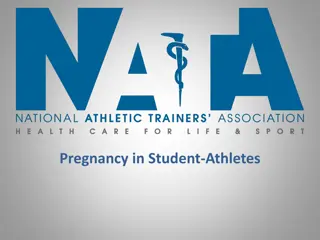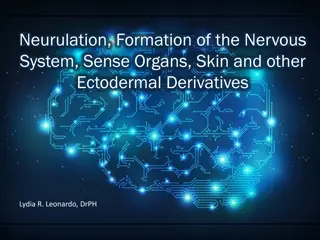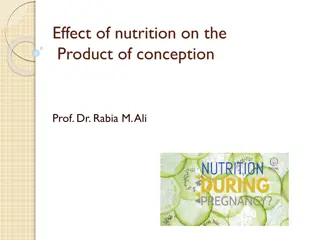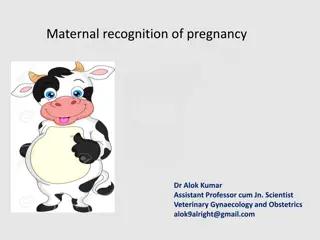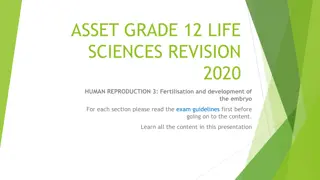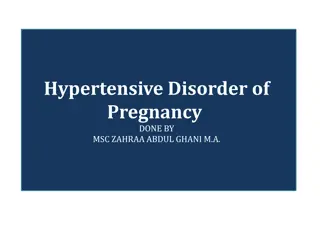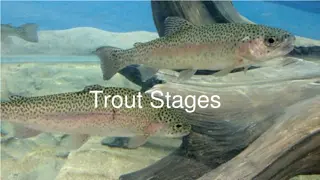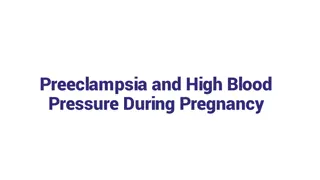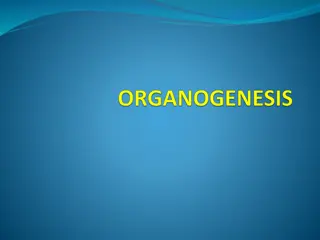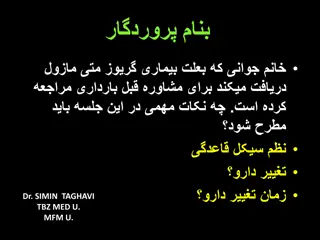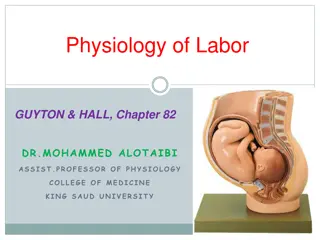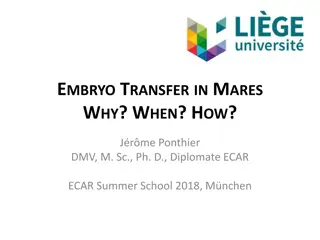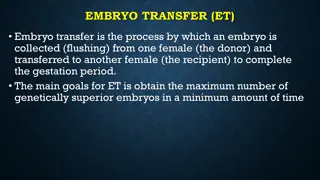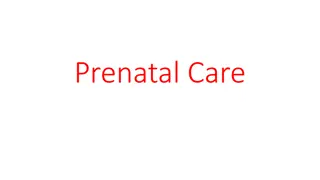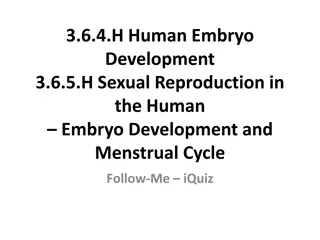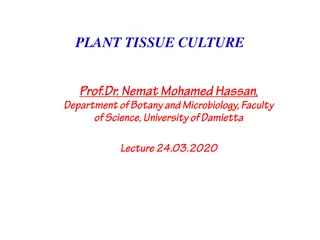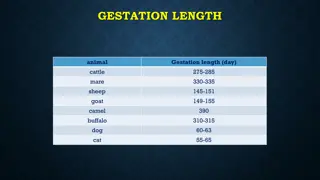Understanding the Three Stages of Pregnancy: Ovum, Embryo/Organogenesis, and Fetus
The journey of pregnancy involves three distinct stages, each crucial for the development of the growing embryo. The ovum stage marks the attachment of the blastocyst to the uterus, followed by the embryo/organogenesis stage where tissues and organs begin to form. Lastly, the fetus stage sees the development of vital systems like the heart and nervous system. This detailed guide explores the key milestones and processes that occur from fertilization to parturition, offering insights into the intricate journey of new life.
Uploaded on Oct 05, 2024 | 0 Views
Download Presentation

Please find below an Image/Link to download the presentation.
The content on the website is provided AS IS for your information and personal use only. It may not be sold, licensed, or shared on other websites without obtaining consent from the author. Download presentation by click this link. If you encounter any issues during the download, it is possible that the publisher has removed the file from their server.
E N D
Presentation Transcript
PREGNANCY STAGES PREGNANCY STAGES
PREGNANCY STAGES The pregnancy extend from the fertilization till parturition The pregnancy divide in to three stages depending on the size of the embryo as well as the development of the tissues and organs Ovum stage or blastocyst stage Embryo or organogenesis stage Fetus stage
OVUM STAGE Extend from fertilization till the development of the primary embryonic membrane of the zygote in uterus or the primary attachment of the blastocyst to the uterus Take 10-12 day After fertilization the zygote continue with division inside the oviduct till the stage of morula (16-32 cell) The morula inter the uterus In day 3 in sow In day 4-5 in the other animals
OVUM STAGE In day 10 the blastocyst is form which consist from Embryonic disc Trophoblast Absorbed fluid from the uterus In day 11 in ewe and in day 12 in cow the diameter of blastocyst 1-1.5 mm During this stage the corpus luteum is active and produce the progesterone In the end of this stage the blastocyst hatch and attach to the endometrium During this stage the main source of nutrients for the embryo are : Uterine milk and fluid Yolk sac
EMBRYO OR ORGANOGENESIS STAGE Extend from day : 11-34 in ewe and doe 12-45 in cow 12-55 or 60 in mare In this stage all the tissues, organs and systems form The first event the trophoblast elongate In day 14 the trophoblast elongate to reach 10 cm in ewes In day 17 the trophoblast elongate to reach 30 cm in cows In day 24 the trophoblast elongate to reach 24 cm in sows In day 18-19 the trophoblast extend to the next uterine horn in cows In mare, bitch and queen the trophoblast does not elongate but become like a simple enlargement ( has benefit in early pregnancy diagnosis in mare)
EMBRYO OR ORGANOGENESIS STAGE In 20 the amnion, somites are form In day 22 the heart is formed and start with beating In day 25 the nervous system is form and the nervous tube start closing In day 30 the attantois start with forming, the buds of extremities also formed In day 30 a primary connection between the amnion and chorion which assist for nutrient transportation After day 35 to 40 in cows and in day 28-30 in ewes the attachment develop to allantois-chorion connection The connection between allantois and chorion delay in mare till day 70-90 of pregnancy
EMBRYO OR ORGANOGENESIS STAGE In animals an attachment occur between the placenta of embryo and uterus while this process called implantation in human The source of nutrients during this stage are Primary attachment between amnion and chorion with uterus Uterine milk and fluid Yolk sac After day 40 the source from the umbilical cord This stage is very critical and all the anomalies form during this stage
FETUS STAGE Extend from day 34 in ewes, day 45 in cows and day 60 in mares till the parturition During this stage all the details of differentiations in organs occur as well as all the process of maturation and growth for the fetus Some organs and systems like eyes, urogenital organs and cerebellum its formation complete during this stage as well as its differentiations


